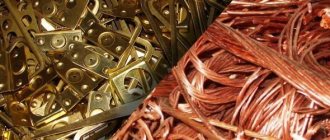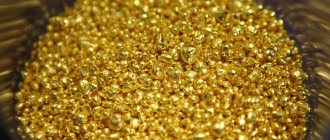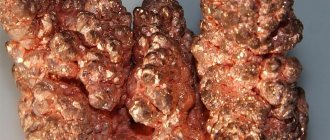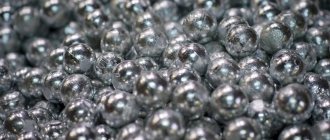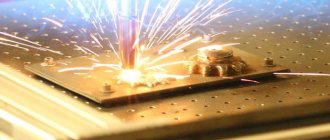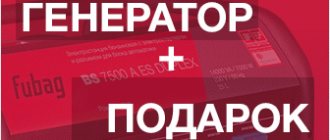Classification
Aluminum alloys are classified, identified and differentiated in several ways:
- by category - by processing methods, wrought and cast;
- by class – hardened by heat treatment or cold hardening;
- by series - by main alloying elements (copper, manganese, silicon, magnesium, magnesium-silicon, zinc, iron, tin and others);
- by alloying systems - by combinations of the main alloying elements with other alloying elements;
- by chemical composition - by the content of alloying elements and impurities within series and systems.
Provider
The supplier Auremo offers to buy aluminum in bulk or in installments. Large selection of semi-finished products in stock. Optimal price of aluminum from the supplier "Auremo". All batches of products have a quality certificate for compliance with standards and technical operating conditions. The certificate indicates the manufacturer, drawing number, alloy grade, chemical composition, mechanical properties and the results of additional tests, for example, hydrotests or pneumatic tests. Implementation of orders in the shortest possible time. Buy aluminum from special warehouses of the supplier Auremo. Wholesale customers receive discounts. Buy aluminum today.
Categories: wrought and foundry
Aluminum alloys are divided into two main categories:
- deformable
- foundries
Deformable
Wrought alloys are designed for various types of pressure processing in hot and, less commonly, cold states:
- rolling
- extrusion (pressing)
- forging
- stamping
- hood
- by dragging.
For each type of forming treatment, alloys are developed that are optimal for these treatments.
Foundry
The main difference between cast alloys and wrought alloys is that they have a significantly higher content of alloying elements. Silicon has a particularly high content, with a nominal content ranging from 4 to 17%.
Casting alloys are used to make aluminum castings using a variety of casting methods, including:
- sand casting;
- chill casting;
- low pressure casting;
- injection molding.
Aluminum production
To produce aluminum, bauxite is used - a rock that contains aluminum oxide hydrates. The world's reserves of bauxite are almost unlimited and are incommensurate with the dynamics of demand.
Bauxite is crushed, ground and dried. The resulting mass is first heated with steam and then treated with alkali - most of the aluminum oxide passes into the alkaline solution. After this, the solution is stirred for a long time. At the electrolysis stage, alumina is exposed to an electric current of up to 400 kA. This allows the bond between the oxygen and aluminum atoms to be broken, leaving only liquid metal. The aluminum is then cast into ingots or various elements are added to it to create aluminum alloys.
Classes: according to the method of hardening
Each category - wrought alloys and cast alloys - is further subdivided according to the main mechanism of their strengthening - increasing mechanical properties, as well as other useful properties.
Thermally hardenable
Many alloys respond to strengthening heat treatment, which is based on the dependence of the solubility of the phases on temperature. These heat treatments include the following operations:
- solid solution treatment (heating for hardening)
- hardening
- release of strengthening phases (aging)
Alloys with such a hardening mechanism, both wrought and cast, are called thermally hardenable.
cold-worked
A large number of other wrought alloys rely on strain hardening instead of heat strengthening. Strain hardening is achieved through hardening, which occurs during cold plastic deformation - cold hardening - of an aluminum product, usually in combination with various annealing modes.
Thermally non-hardening cast alloys
Cast alloys, as a rule, are not subjected to deformation processing due to their reduced plastic properties. In addition, some of them are also not thermally hardenable. They are used in a cast state without heat treatment or in thermally modified states that are not associated with the phenomena of dissolution and release of strengthening phases.
The use of aluminum alloys in products in contact with food
This metal is used to produce a variety of dishes, meat grinders, containers for storing liquids and mixtures, cutlery, machines for workshops and conveyors for moving products, various types of accessories and other products.
The raw materials are also used for the production of heat-resistant surfaces and a variety of kitchen equipment. Dishes made from such alloys do not change the properties of food products, they retain the beneficial substances present in them, as well as the original properties and microelements important for the body.
Series: by main alloying elements
Series are groups of alloys, wrought and cast, which are combined according to the main alloying elements. The world-wide American designation system for aluminum alloys is based on this division.
Wrought alloys and their designations
The international designation system for wrought alloys is based on the American designation system, which was developed back in the 1950s.
This system uses notations that consist of four digits. The numbers in place of the “x” signs are used to subdivide alloys within the series.
- 1xxx – Technically pure aluminum with a controlled chemical composition. For example, 1050 aluminum.
- 2xxx – The main alloying element is copper, although other elements such as magnesium may also be present. Widely used in aircraft construction due to their high strength (yield strength up to 455 MPa). Examples are 2014 and 2024.
- 3xxx – Manganese, is the main alloying element. They are used as general purpose alloys for construction and various consumer products, including aluminum cans for soft drinks and beer. Example - 3105.
- 4xxx – The main alloying element is silicon. Used in welding rods and wires, as well as sheets for soldering.
- 5xxx – The main alloying element is magnesium. It is used in ship hulls, gangways and other products that are exposed to the marine atmosphere. Example - 5252.
- 6xxx – The main alloying elements are magnesium and silicon. Typically used for building profiles and automotive parts. Examples are 6060 and 6063.
- 7xxx – The main alloying element is zinc, although other elements such as copper, magnesium, chromium and zirconium may also be present. They are used in load-bearing elements of aircraft and other high-strength structures and products. This series includes the strongest aluminum alloys with a yield strength of more than 500 MPa. Example - 7075.
- 8xxx – Various main alloying elements. 8xxx series alloys may contain noticeable amounts of tin, lithium and/or iron.
- 9xxx: Reserved for future use.
Wrought alloys that are heat hardenable include the 2xxx, 6xxx, 7xxx series alloys and some 8xxx series alloys. The various combinations of alloying elements and strengthening mechanisms that are used for wrought alloys are shown in Table 1.
Table 1 – Classification of deformable aluminum alloys according to the mechanism of their hardening [1]
The strength levels that are achieved in various classes of wrought alloys are shown in Table 2.
Table 2 – Strength levels of various wrought aluminum alloys [1]
Casting alloys and their designations
For cast alloys, a notation system of three numbers is used, followed by a sort of "decimal". The decimal fraction .0 in all cases refers to the cast alloy limits. The decimals .1 and .2 refer to the chemical composition of the finished ingots.
- 1хх.х - Technically pure aluminum with a controlled chemical composition, including impurities. Used for the manufacture of electric motor rotors.
- 2хх.х – The main alloying element is copper. Other alloying elements may also be present.
- 3хх.х – The main alloying element is silicon. Additional alloying elements can be copper and magnesium. Alloys of the 3хх.х series make up about 90% of all shaped aluminum castings.
- 4хх.х – The main alloying element is silicon.
- 5хх.х – The main alloying element is magnesium.
- 6хх.х – Not applicable.
- 7хх.х – The main alloying element is zinc. Additional alloying elements are copper and magnesium.
- 8хх.х – The main alloying element is tin.
- 9хх.х – Not applicable.
Thermally hardenable alloys include casting alloys of the 2xx, 3xx and 7xx series.
The strength levels that are achieved in various classes of cast alloys are shown in Table 3.
Table 3 – Strength levels of various casting alloys [1]
Alloy or not?
To accurately distinguish between aluminum and its alloys, it is recommended to order laboratory analysis. This requires time to wait for the result to arrive. And additional expenses. Therefore, this method is relevant when a large-scale transaction is planned. For small lots, when a person wants to get his money faster, this option will not work.
How can you be sure that it is not an alloy? After all, a magnet and visual identification by color are not suitable? The following options are available:
Alloying systems
As can be seen above, some series of aluminum alloys, wrought and cast, include one, two or three different alloying systems.
These alloying systems may include only the main alloying elements or additional one or more alloying elements.
Alloying systems for wrought alloys
- 2xxx – Al-Cu, Al-Cu-Mg, Al-Cu-Mg-Si, Al-Cu-Li
- 3xxx – Al-Mn
- 4xxx – Al-Si
- 5xxx – Al-Mg
- 6xxx – Al-Mg-Si
- 7xxx – Al-Zn, Al-Zn-Mg, Al-Zn-Mg-Cu
- 8xxx – Al-Fe, Al-Fe-Ni, Al-Li-Cu-Mg
Alloy systems for cast alloys
- 2xx – Al-Cu, Al-Cu-Ni-Mg, Al-Cu-Si,
- 3xx – Al-Si-Cu, Al-Si-Cu-Mg, Al-Si-Mg
- 4xx – Al-Si
- 5xx – Al-Mg
- 7xx – Al-Zn
- 8xx – Al-Sn
Chemical composition
Within series and alloying systems, aluminum alloys differ in their chemical composition, that is, in the content of certain alloying elements, as well as impurities.
The nominal chemical compositions of typical wrought alloys – wrought and cast alloys – are presented in Tables 4 and 5. It should be noted that these tables represent only a small fraction of the total number of aluminum alloys. There are more than 500 of them in the list of international registrations.
Wrought alloys
Table 4 – Types of products and nominal chemical composition of thermally hardened deformable aluminum alloys [1]
Table 5 – Types of products and nominal chemical composition of cold-worked wrought aluminum alloys
Casting alloys
Table 6 – Casting methods and nominal chemical composition of thermally hardenable cast aluminum alloys
Table 7 – Casting methods and nominal chemical composition of thermally non-hardening cast aluminum alloys
Use of aluminum for food packaging
Foil and special forms are produced from sheet material, which are increasingly used and used in the form of packaging. This allows you to maintain the temperature and excellent taste of dishes, as well as reheat or freeze them without losing quality or beautiful appearance.
The metal is harmless to health and does not adversely affect the properties of dishes. Aluminum packaging, which can take on and retain any shape, is used for transporting semi-finished products, fast food, meat and fish, as well as other products.
European designation system
Wrought alloys
The European designation system for wrought aluminum alloys is based on the “American” system of four numbers with a few letters added in front of them, for example, EN AW-6060. Here EN stands for “European standard”, AW stands for “wrought aluminum”. The numbers in this designation correspond to the alloy in the international system for registration of wrought alloys.
Casting alloys
The European designation system for cast aluminum alloys is as follows: EN AC-xxxxx, where:
- EN – European standard;
- A – aluminum;
- C – foundry;
- xxxxx – five numbers or chemical symbols.
Example: EN AC-42000 or EN AC-Al 7SiMg
Digital designation
The first digit designates one of four groups (series) of the main alloying elements:
- Copper (Cu) – 2xxxx
- Silicon (Si) – 4хххх
- Magnesium (Mg) – 5xxx
- Zinc (Zn) – 7xxxx
The second digit indicates the base alloy within the group (series):
- 21xxx – AlCu
- 41xxx – AlSiMgTi
- 42xxx – AlSi7Mg
- 43xxx – AlSi10Mg
- 44xxx – AlSi
- 45xxx – AlSi5Cu
- 46xxx – AlSi9Cu
- 47xxx – AlSi(Cu)
- 48xxx – AlSiCuNiMg
- 51xxx – AlMg
- 71xxx – AlZnMg
The third, fourth and fifth digits indicate:
- The third number is the modification of the base alloy
- The fourth digit is usually zero
- The fifth digit is zero for general purpose alloys and some digit for aerospace alloys
Is this aluminum accepted for scrap and at what price?
The raw material is not the most expensive type of aluminum scrap, but not the cheapest either. Food-grade aluminum in Moscow is accepted for scrap metal at different prices per 1 kilogram. Ours sets the following cost per kilogram for the following types of scrap:
- Aluminum cans - 30-51 rubles;
- Foil - 45-76 rubles;
- Aluminum containers and utensils - 60-93 rubles.
The final cost of such products is influenced by:
- the degree of purity of the alloy and the presence of impurities present in it;
- volume of collected delivery lot;
- quality and characteristics of the alloy.
The scrap is melted down and reused to make kitchen items, accessories and equipment.

